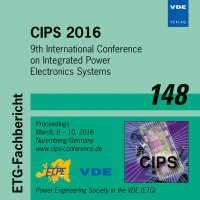Investigation of a power module with double sided cooling using a new concept for chip embedding
Conference: CIPS 2016 - 9th International Conference on Integrated Power Electronics Systems
03/08/2016 - 03/10/2016 at Nürnberg, Deutschland
Proceedings: CIPS 2016
Pages: 10Language: englishTyp: PDF
Personal VDE Members are entitled to a 10% discount on this title
Authors:
Stahr, H.; Morianz, M. (AT & S, Leoben, Austria)
Gross, S. (Continental, Nürnberg, Germany)
Unger, M.; Nicolics, J. (TU Wien, Austria)
Boettcher, L. (Fraunhofer IZM, Berlin, Germany)
Abstract:
Embedded components technology has launched its implementation in volume products demanding for highest miniaturization level. Small modules with embedded dies and passive components on the top side are mounted in handheld devices. Smart phones have been the enablers for this new technology using the capabilities of embedded components. With this technological background another business field became interesting for embedded components – the embedded power electronics. These applications ask for quite different requirements compared to the embedded technology of the first generation. The roadmaps for power application development show an ongoing decrease of volume and weight for power modules driven by the requirements for automotive industry. The European project EmPower has been labeled from CATRENE (Cluster for Application and Technology Research in Europe on NanoElectronics) organization and launched in 2013 as a development project for new power packages and power modules using die embedding technology. For the realization of this technology copper termination on MOSFETs, IGBTs and power diodes is necessary. Equipment and processes have been developed in the supply chain of EmPower to support the development of power modules ranging from 500 W to 50 kW. For enhanced thermal performance of power modules a concept for double sided cooling has been developed. Besides full area contacting the MOSFET on drain side with copper and contacting the embedded components in a power core with an isolated metal substrate with silver sinter paste a very effective concept for reducing thermal resistances and inductance will be shown on the example of a 500W demonstrator. With the realization of this demonstrator the power embedding concept can be proved. This paper will focus on the behavior of the power module for operational conditions of a Pedelec application. Basic reliability aspects will be shown as well as the electrical characterization – switching behavior, power losses and power cycling. Furthermore the thermal properties of the 500 W demonstrator module as predicted by results from thermal simulations will be experimentally verified. Finally an outlook will be given for possible automotive products based on this demonstrator.


